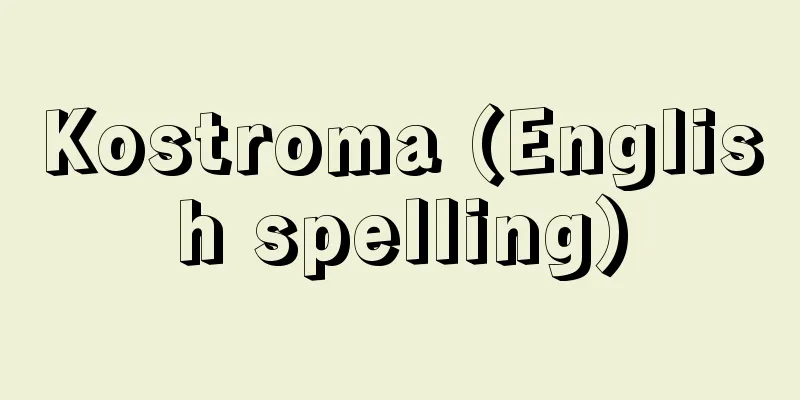Gold Seal - Kin'in

|
A pure gold seal engraved with the words "King of Na, the King of Kan." It was discovered in 1784 (Tenmei 4) by a farmer named Jinbei in Shikanoshima Village, Naka County, Chikuzen Province (Higashi Ward, Fukuoka City). It was kept by the Kuroda family, the lords of Fukuoka Domain, and has remained to this day. The seal has the five characters "King of Na, the King of Kan" engraved in three lines in clerical script. There are various theories on how it should be read, but in the late Edo period, To Tōteikan (1732-1797) read "King of Na" as "Ito" and identified it with Ito (Ito) Province in Chikuzen. Later, in 1892 (Meiji 25), Miyake Yonekichi read it as "King of Na of Wa (Wa) in Han" and identified Na with the ancient Na Prefecture, now Naka District, and this theory has been the most popular ever since. The Eastern Barbarians section of the Book of the Later Han states, "In the second year of the Jianwu Zhongyuan era (57 AD), the Wa Nakoku presented tribute and paid tribute to the Emperor. The envoy himself called himself Daifu. This is the southernmost border of Wa. Emperor Guangwu bestowed a seal on them," and the discovery of the gold seal supports this article in the Book of the Later Han. At the time, Nakoku prospered through trade with the continent and was a representative presence of Wa. According to Jinbei's written statement, the circumstances of the discovery of the Golden Seal were that while repairing a ditch at Kananosaki, where Jinbei's rice fields were located, a stone large enough for two people was found underground on the bank of the ditch, and the Golden Seal was placed inside a stone enclosure underneath. Regarding the location of the Golden Seal's excavation, in 1913 (Taisho 2), Heijiro Nakayama (1871-1956) of Kyushu Imperial University determined that the excavation site was Furudo, located on the opposite shore of Hakata Bay, based on drawings owned by the Azumi family of Shikanoshima, and a monument reading "The place where the Golden Seal of Kannoi Nakoku radiated light" has now been erected. However, since the site is on a cliff facing the sea, with no remains of rice paddies, and the place name Furudo does not match, some say that it may have been Kananohama, located in the northwest of the island. There have long been various theories about the nature of the site where the Golden Seal was excavated, including (1) the concealment theory proposed by Ban Nobutomo, (2) the tomb theory proposed by Suga Masatomo (1824-1897), (3) the dolmen theory proposed by Hashizume Takeo (1891-1979), (4) the dolmen theory proposed by Kayamoto Morito (1901-1970), and (5) the rock-climbing theory proposed by Mizuno Yu (1918-2000). However, since the location and circumstances of the discovery of the Golden Seal remain unclear, it is not possible to determine the nature of the remains. According to measurements made in 1966 (Showa 41) by the Metrology Research Institute of the Agency of Industrial Science and Technology (now the National Metrology Institute of the National Institute of Advanced Industrial Science and Technology), the average length of each side of the seal was 2.347 cm, its height was 2.236 cm, it weighed 108.729 grams, and the knob was a snake knob shaped like a snake. The side lengths fit the standard of one inch (sun) from the Han dynasty. Since the theory that the Gold Seal was a fake was put forward by Matsuura Michisuke (1801-1866) in the late Edo period, many theories have been put forward that it was a fake or a private seal, but today the theory that it is a genuine seal holds sway. It was designated a National Treasure in 1954 (Showa 29). [Inoue Mikio] "The Golden Seal - The Golden Seal of the Wa Kingdom, written by Mitsuo Otani (1974, Yoshikawa Kobunkan)" ▽ "The Buried Golden Seal, written by Seidai Fujima (Iwanami Shinsho)" [Reference] |Source: Shogakukan Encyclopedia Nipponica About Encyclopedia Nipponica Information | Legend |
|
「漢委奴国王」と陰刻された純金製の印。1784年(天明4)筑前(ちくぜん)国那珂(なか)郡志賀島(しかのしま)村(福岡市東区)で百姓甚兵衛(じんべえ)により発見された。福岡藩主黒田家に納められ今日まで伝わる。印には隷書(れいしょ)体で「漢委奴国王」の5字が3行に陰刻されている。読み方には諸説あるが、江戸後期、藤貞幹(とうていかん)(1732―1797)は「委奴」を「いと」と読み、筑前の怡土(いと)(伊都)国に比定した。その後1892年(明治25)三宅米吉(みやけよねきち)により「漢(かん)の委(わ)(倭)の奴(な)の国王」と読まれ、奴を古代の儺県(なのあがた)、いまの那珂郡に比定されて以来この説が有力である。『後漢書(ごかんじょ)』東夷(とうい)伝に、「建武中元二年(西暦57)倭奴国、貢を奉じて朝賀す。使人自ら大夫と称す。倭国の極南界なり。光武(こうぶ)賜うに印綬(いんじゅ)を以(もっ)てす」とみえるが、金印の発見は『後漢書』のこの記事を裏づけるものである。当時奴国は大陸との交易により繁栄し、倭の代表的存在であった。 金印発見の状況は、甚兵衛の口上書によると、甚兵衛の田のある叶の崎(かなのさき)の溝を改修していたところ、溝岸の地中に2人持ちほどの石があり、その下の石囲いの中に金印が納められていた、という。金印の発掘場所については、1913年(大正2)九州帝国大学の中山平次郎(1871―1956)が志賀島の阿曇(あずみ)家所蔵の絵図などから博多(はかた)湾の対岸にあたる古戸を発掘地点とし、現在「漢ノ委奴国金印発光之処」という記念碑が建てられている。しかし、現地が海に面した断崖(だんがい)にあり水田遺構もなく、古戸という地名も一致しないため、島の北西の叶の浜(かなのはま)とする説もある。金印出土遺跡の性格については古くから諸説あるが、代表的なものとして、(1)伴信友(ばんのぶとも)の隠匿説、(2)菅政友(すがまさとも)(1824―1897)の墳墓説、(3)橋詰武生(たけお)(1891―1979)のドルメン説、(4)榧本杜人(かやもともりと)(1901―1970)の支石墓(しせきぼ)説、(5)水野祐(みずのゆう)(1918―2000)の磐坐(いわくら)説などがある。しかし、いまだ金印の出土地点や出土状況が不明確なため、いかなる性質の遺構であったか断定できない。1966年(昭和41)に実施された工業技術院計量研究所(現、産業技術総合研究所計量標準総合センター)の測定によると、印面の1辺の長さの平均は2.347センチメートル、高さ2.236センチメートル、重さ108.729グラムで、鈕(ちゅう)は蛇を象(かたど)った蛇鈕である。辺の長さは漢代の1寸の規格に適合する。江戸時代後期、松浦道輔(まつうらみちすけ)(1801―1866)によって金印偽作説が出されて以来、多くの偽作説や私印説が出されたが、今日では真印説が有力である。1954年(昭和29)国宝に指定された。 [井上幹夫] 『大谷光男著『金印――漢委奴国金印』(1974・吉川弘文館)』▽『藤間生大著『埋もれた金印』(岩波新書)』 [参照項目] |出典 小学館 日本大百科全書(ニッポニカ)日本大百科全書(ニッポニカ)について 情報 | 凡例 |
>>: Golden mosquito - Golden mosquito
Recommend
Ganburi - Ganburi
〘Noun〙 Abbreviation of "ganburi gawara (wild ...
Hot - Hot
...The fibers of the bark are very strong, and th...
Beck, T.
…Although it does not have many topics, it is wel...
Kosaza [town] - Kosaza
A former town in the west of the Kita Matsuura Pen...
Hugo - Victor Hugo
French poet, novelist, and playwright. Born in Be...
Kendou Ishii
Year of death: December 6, 1943 Year of birth: Jun...
Vinca major (English spelling) Vincamajor
… [Eiichi Asayama]. … *Some of the terminology th...
Tengri (English spelling)
It refers to heaven as a material entity in the Tu...
Makedonia
…It is a landlocked country located in the centra...
Hans Ahlman
1889‐1974 Swedish geographer and glaciologist. Fol...
Rishiri [town] - Rishiri
A town in northern Hokkaido, Rishiri District, occ...
Ekadanta - Ekadanta
…He is said to be the son of Lord Shiva and Parva...
Tamba Sarugaku
In the Middle Ages, Sarugaku was based in Tamba. T...
Sanyutei Kinba - Sanyutei Kinba
Rakugo performer. (1) The first (1857-1923, ∥ Anse...
loi d'ordre public (English spelling)
...In addition, unless there is an international ...

![Mayon [mountain] - Mayon](/upload/images/67ccea8e93fdc.webp)



![Oguni [town] - Oguni](/upload/images/67cb1bb4eb7b9.webp)



